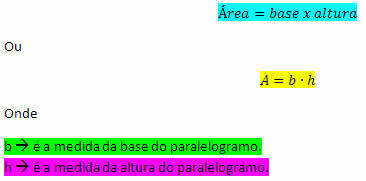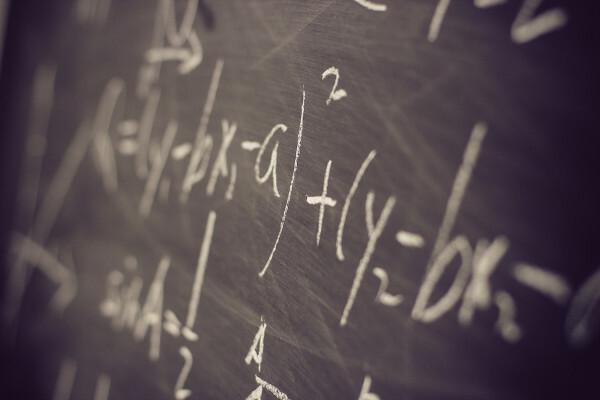Plane geometry is one of the most used parts of mathematics in everyday situations. Every day we find ourselves in an occasion when it is necessary to calculate the length of something, the area of some place, the distance between two points, etc. Construction is one of the areas that makes a lot of use of the formulas and concepts of geometry. Let's study how the area of a parallelogram is determined.
First, let's define what a parallelogram is. Every quadrilateral that has its opposite sides parallel is called a parallelogram. Thus, we can say that the square, rectangle and rhombus are examples of parallelograms.

To find the area of a parallelogram, it is only necessary to know the measurements of the base and its height. Knowing the measurements of these elements, the parallelogram area will be given by:

Let's solve some examples to better understand the use of the formula above.
Example 1. Calculate the area of a parallelogram whose base measures 15 cm and the height 12 cm.
Solution: According to the problem statement, we know that b = 15 cm and h = 12 cm.
Thus, we can apply the parallelogram area formula.
A = base x height
A = 15 x 12
H = 180 cm2.
Don't forget that the area measurement units are always squared: m2, cm2, km2, etc.
Example 2. Determine the area of the figure below:
Solution: The figure above is a parallelogram (see opposite parallel sides) whose base measures 25 cm and height 20 cm. Note that the height forms an angle of 90O (right angle) with the base. As we know the height and base measurements, just use the area formula. Thus, we will have:
A = base x height
A = 25 x 20
H = 500 cm2
Therefore, the parallelogram in the figure has an area of 500 cm2.
By Marcelo Rigonatto
Mathematical
Kids School Team



